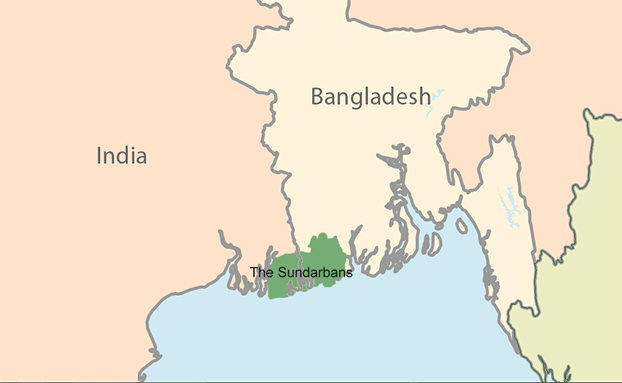Sundarbans | 25 Mar 2021
Why in News
Promises related to development of Sundarbans are being made by different political parties, ahead of West Bengal assembly elections.
- Sundarbans region was badly damaged by Cyclone Amphan in 2020.
Key Points
- It is a vast contiguous mangrove forest ecosystem in the coastal region of Bay of Bengal spread over India and Bangladesh on the delta (world’s largest) of the Ganges, Brahmaputra and Meghna rivers.
- It contains the world’s largest mangrove forests.
- Much of the area has long had the status of a forest reserve, but conservation efforts in India were stepped up with the creation of the Sundarbans Tiger Reserve in 1973.
- Sundarbans National Park, established in 1984, constitutes a core region within the tiger reserve; it was designated a UNESCO World Heritage site in 1987.
- Sunderbans was designated as a Biosphere Reserve by UNESCO in 2001.
- Sundarban Wetland, India was recognised as the ‘Wetland of International Importance’ under the Ramsar Convention in January 2019.
- Sunderban National Park is known for its wide range of fauna, including 260 bird species and is home to many rare and globally threatened wildlife species such as the Estuarine Crocodile, Royal Bengal Tiger, Water Monitor Lizard, Gangetic Dolphin and Olive Ridley Turtles.
- The Sunderbans Delta is the only mangrove forest in the world inhabited by tigers.
- For its preservation, Discovery India and World Wide Fund (WWF) India partnered with the Government of West Bengal and local communities in the Sundarbans in 2019.
Mangroves
- Mangroves are the plant communities occurring in inter-tidal zones along the coasts of tropical and subtropical countries.
- Mangrove forests perform multiple ecological functions such as production of woody trees, provision of habitat, food and spawning grounds for fin-fish and shellfish, provision of habitat for birds and other valuable fauna; protection of coastlines and accretion of sediment to form new land.
- Among the states and Union Territories, West Bengal has the highest percentage of area under total Mangrove cover followed by Gujarat and Andaman and Nicobar Islands.
- The India State of Forest Report gives the data about mangroves and their conditions in the country.

